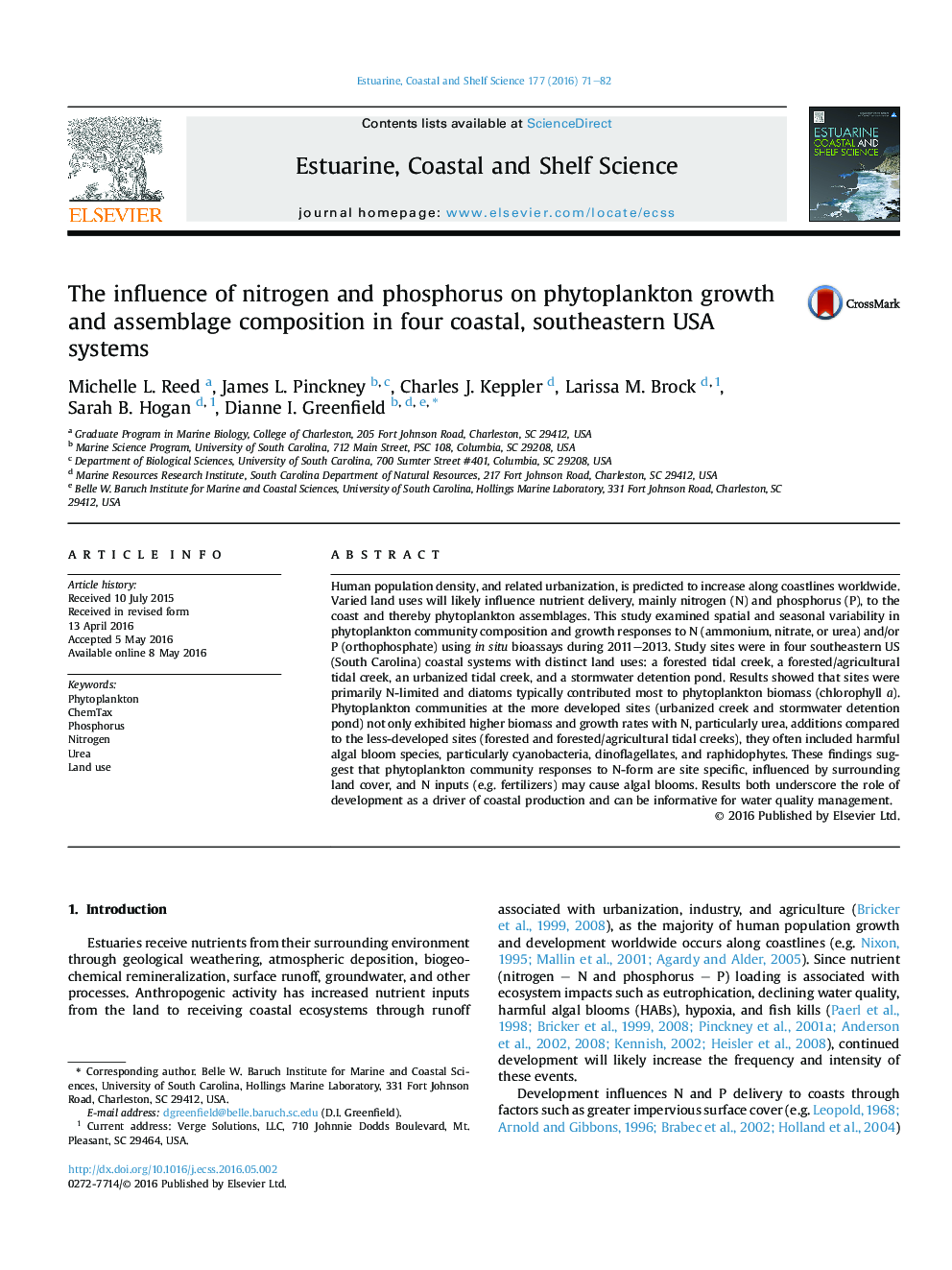| کد مقاله | کد نشریه | سال انتشار | مقاله انگلیسی | نسخه تمام متن |
|---|---|---|---|---|
| 4539218 | 1626622 | 2016 | 12 صفحه PDF | دانلود رایگان |
• We assessed phytoplankton biomass and growth responses to N in 4 coastal SC systems.
• Phytoplankton response to N was positively related to surrounding land development.
• Biomass and growth responses were often greatest in treatments containing urea.
• Developed sites often included harmful species (cyanobacteria, dinoflagellates).
• Increased urea inputs may facilitate blooms in developing coastal regions.
Human population density, and related urbanization, is predicted to increase along coastlines worldwide. Varied land uses will likely influence nutrient delivery, mainly nitrogen (N) and phosphorus (P), to the coast and thereby phytoplankton assemblages. This study examined spatial and seasonal variability in phytoplankton community composition and growth responses to N (ammonium, nitrate, or urea) and/or P (orthophosphate) using in situ bioassays during 2011–2013. Study sites were in four southeastern US (South Carolina) coastal systems with distinct land uses: a forested tidal creek, a forested/agricultural tidal creek, an urbanized tidal creek, and a stormwater detention pond. Results showed that sites were primarily N-limited and diatoms typically contributed most to phytoplankton biomass (chlorophyll a). Phytoplankton communities at the more developed sites (urbanized creek and stormwater detention pond) not only exhibited higher biomass and growth rates with N, particularly urea, additions compared to the less-developed sites (forested and forested/agricultural tidal creeks), they often included harmful algal bloom species, particularly cyanobacteria, dinoflagellates, and raphidophytes. These findings suggest that phytoplankton community responses to N-form are site specific, influenced by surrounding land cover, and N inputs (e.g. fertilizers) may cause algal blooms. Results both underscore the role of development as a driver of coastal production and can be informative for water quality management.
Figure optionsDownload high-quality image (253 K)Download as PowerPoint slide
Journal: Estuarine, Coastal and Shelf Science - Volume 177, 5 August 2016, Pages 71–82
